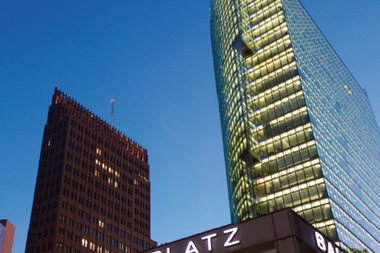Blackstone has overtaken as the world’s largest real estate investment manager, according to a survey.
The New York-headquartered company has gross assets under management (AUM) of €143.2bn, according to the annual ANREV/INREV/NCREIF fund manager survey, beating Toronto-based , which manages €140.5bn.
Last year, and Blackstone came in at second.
The latest report by the three real estate associations shows as the third-largest real estate manager, followed by .
Last year, came in at third and Global Investors came in at fourth.
IPE Real Estate’s most recent – published at the midway point between the two ANREV/INREV/NCREIF studies – put Brookfield in first place, followed by PGIM, Blackstone and TH Real Estate.
The movements in AUM suggest a high level of competition among the asset class’ biggest investment managers.
INREV, the European real estate association, said the aggregate AUM recorded by its survey had jumped from €2bn at the end of 2015 to €2.4trn at the end of 2016.
Henri Vuong, INREV’s director of research and market information, said: “This survey suggests that big is beautiful. The size of the real estate pie is clearly continuing to grow with non-listed vehicles remaining a dominant part of that expansion.
“The survey also echoes investors’ stated appetite for greater allocations to real estate overall. It seems there’s plenty of dry powder waiting to be deployed.”
Principle Real Estate Investors and joined the top 10 ranking of global fund managers, displacing Investment Management and .
Only two European managers – Investment Managers–Real Assets and Global Investors – featured in the global top 10, although IM–RA dominated the list of European managers.
The joint report by INREV, ANREV and NCREIF, also revealed significant growth in the average AUM of the top 50 global real estate fund managers with a 14.9% uplift from €35.6bn in 2015 to €40.8bn.
The top ten global fund managers accounted for 38.8% of the overall total and the average total AUM of the top three fund managers reached €133bn versus €127.8bn the previous year.
However, the average AUM of all respondents was up from €13.1bn to €13.7bn, indicating an increase in funds under management for all managers regardless of size.
One in five survey respondents said they had been involved in mergers and acquisitions over the past decade, reflecting the continuing trend for consolidation – particularly among larger managers.
Non-listed real estate vehicles – including funds, separate accounts, joint ventures and club deals – accounted for €1.9trn (80.4%) of total AUM.
However, there were notable differences in regional investment strategies with non-listed real estate funds and private REITs accounting for 53.4%, 49.5% and 50.6% of total AUM in Europe, North America and Asia Pacific, respectively.
There were also regional differences in the size of non-listed real estate funds. While funds make up almost half of total AUM in both Europe and North America, the average fund size is €400m and €1.5bn, respectively, showing a sizeable value difference in favour of North American vehicles.








